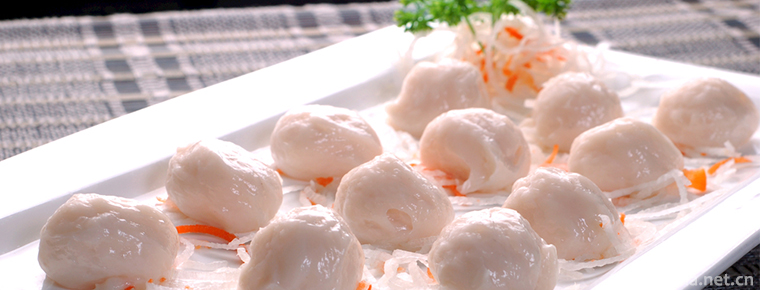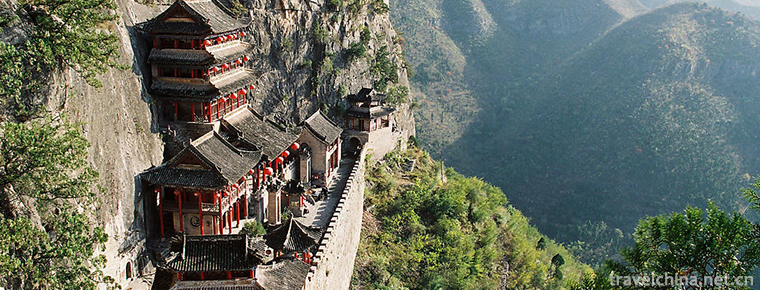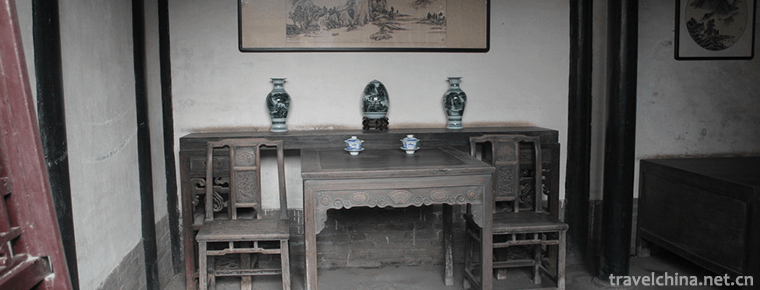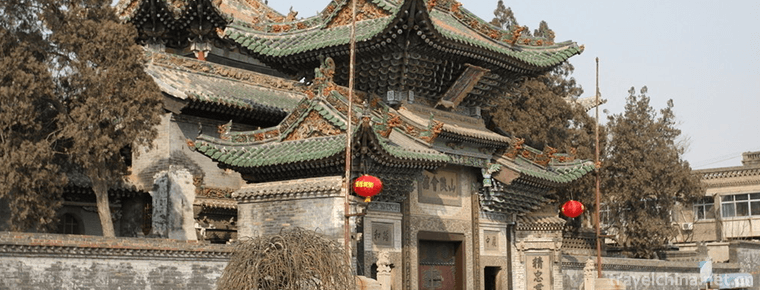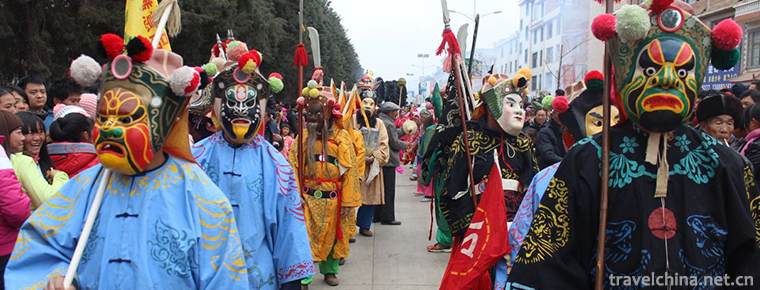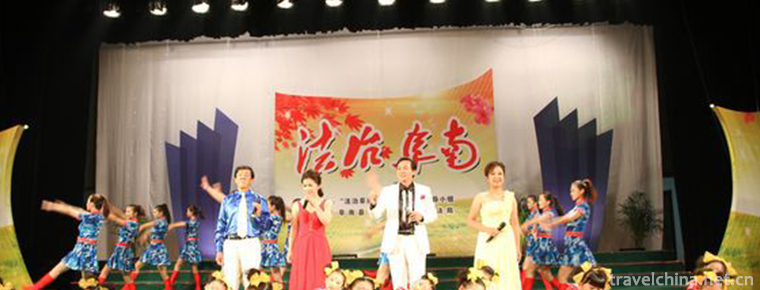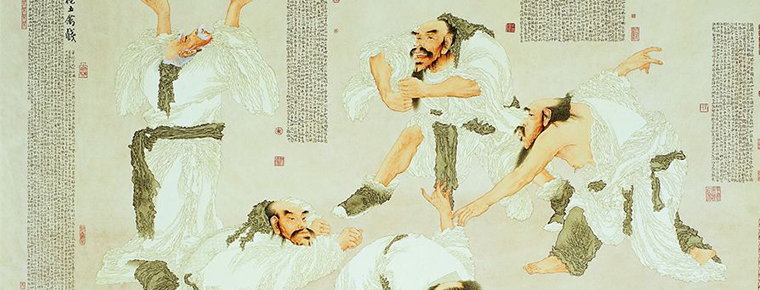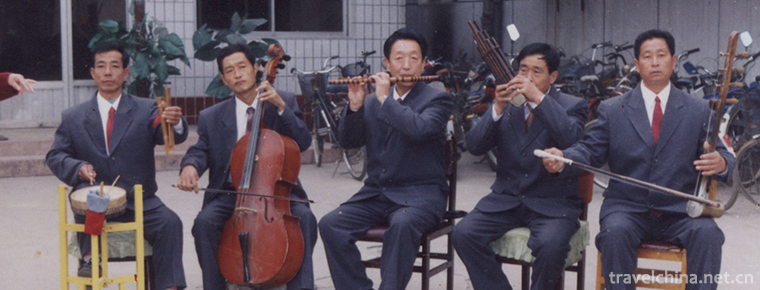Daishan Lake
Daishan Lake
Daishan Lake is located in the ancient town of Feidong County, Hefei City, Anhui Province. Daishan Lake has a subtropical climate, warm and humid, with an average annual temperature of 15.7 degrees Celsius, warm in winter and cool in summer. Daishan Lake is known as "Natural Oxygen Bar" because of its pleasant environment and blending of mountains and rivers. It is known as "Hefei's business card and back garden".
Daishan Lake is one of the four major tourism projects of Hefei City's key tourist attractions and Hefei City's "trillion yuan master plan". The newly-built tourist attractions supported by provincial, municipal and county tourism bureaus are also one of the key tourism projects of the State Tourism Administration for foreign investment.
Daishan Lake is located at the junction of Feidong and Quanjiao County. The relative height of the area is 20-50 meters, with continuous low hills and gentle slopes. Most of the rocks are basalt and barite. Only the western margin is covered by Quaternary system. The strata exposed around the lake area are all Xileng Formation of Zhangbaling Group of Mesoproterozoic, which is divided into three parts, and the lithology of the upper and lower parts is similar. The upper part is grayish-white and light-grayish-green quartz keratophyre; the middle part is complex, consisting of grayish-white, grayish-purple and dark-red quartz keratophyre, spilite and more than ten kinds of rocks; the lower part belongs to flysch formations, with spilite-quartz keratophyre formations on the top and phyllite-schist series on the bottom.
natural resources
Daishan Lake is the Chuhe River system in the Yangtze River Basin, and an artificial reservoir was built from 1970 to 1972. More than 9,000 mu of Lake surface, 19 million cubic meters of annual water storage, 89.5 square kilometers of incoming water area, 26.176 million cubic meters of annual flow, 67.4 million mu of irrigation area, 15,000 mu of mountain forest (forest coverage 92.9%) managed by forest sites of the state-owned ancient city around Daishan Lake, there are no industrial and mining enterprises around, only two natural villages in the area, with a population of 180, mainly agriculture. The average water depth of Daishan Lake is 20 meters, and the deepest water is in the water area of West Lake near Valley of Valentine, which is 46 meters deep. The water of Daishan Lake has no pollution, and the sandy and natural water of the lake bottom is filtered into the lake through forest. The lake water is clear and bottomless, and the six water quality indicators meet the national water quality standards.
climatic conditions
Daishan Lake is located in the subtropical geographic region, the south side of the Yangtze-Huaihe River Divide is over-warm temperate zone, with obvious monsoon, warm and humid, abundant rainfall, annual average temperature of 15.70C, annual average rainfall of 969.5mm, frost-free period of about 225 days. Daishan Lake harbor braides vertically and horizontally, the water surface is wide, there is an island in the lake, known as Swan Island, an area of 180 mu, the island is lush vegetation, flowers and herbs overflowing in all directions, drought is not drying up, the rain is not satisfied, the island enriches the lake scenery content. The mountain forests around the lake are managed by the forestry sites in the ancient city of Feidong County, which has a total area of 15808 Mu and a standing stock of 42745 cubic meters.
The territory is rich in animal and plant resources. There are as many as 54 families and 412 species of plant species, mainly pine, fir, Ailanthus altissima, locust and Yuanzhu, among which pine is the dominant population. Animal species are diverse, especially bird resources are quite abundant. According to the survey, there are more than 70 species, with Heron as the dominant population, including heron, egret, grey egret and so on.
The master plan for tourism development of Daishan Lake has passed the final examination of experts in the fifth year of OO, and has been confirmed by the government. Gudai Highway, 3.25 kilometers long, has been built to connect Liangjie Road. It has built a conference center, a sauna center, a restaurant, eleven single villas, two double-storey villas, a luxury villa and a tourist reception complex with an area of about 8100 square meters. Fangmi Yingbin Villa; constructed beach bathing grounds, light tennis courts, mazes, military playgrounds, horse racing grounds, local fishing and other tourism projects for tourists; opened up more than 30 boats with water tourism lines.
Main attractions
Wetland
Wetland is a transitional zone between terrestrial ecosystem and aquatic ecosystem. Under the specific environment of soil immersion in water, many characteristic plants grow in wetland. Wetlands are widely distributed all over the world. They are important ecosystems with numerous wild animal and plant resources. Many rare waterfowls can not reproduce and migrate without wetlands, so wetlands are called "paradise of birds". Daishan Lake is the largest wetland park in Anhui Province. It is known as the "wetland capital" and "bird paradise" and covers an area of more than 3000 mu. There are hundreds of aquatic plants in the park, inhabiting more than 80 kinds of rare birds, such as egrets, grey egrets, herons, black-billed gulls, Mandarin ducks, swans and so on. More than 20,000 kinds of aquatic plants are the paradise for 100 birds to inhabit. Deep in the reed sea, the dripping kingfishes, the singing of cranes and dancing gulls, the gathering of 100 birds, which are a group of auspicious and peaceful scenery.
Swan Island
Swan Island covers an area of 180 mu. It is called "Swan Island" because it looks like a swan with flapping wings. The island is rich in vegetation, flowers and herbs. The Island enriches the lake scenery and creates many excellent scenery. It is an ideal place to develop tourist resorts. About Swan Island, there is also a beautiful myth and Legend - Duhua all living beings. Once upon a time, this was a bird's paradise. Since a hunter who claimed to be the "King of Hunting" moved here, it has been restless. Seeing the birds in paradise becoming scarce, some couples of swans are anxious. One day, just as the female hatched her eggs, the hunting king's bow and arrow aimed at her. The male rushed to the hunting King regardless of his body. The bowstring rang, and the male fell into the pool of blood. The female bird saw the scene and hit the tree and died. When the Queen Mother passed by, she was very touched. She turned the male bird into a hill and the female bird into a lake. Daishan Lake was nestled in Swan Island, and the hunting king was also standardized. From then on, she became kind and fed mountain birds and wild animals on the island all day long.
Zen Buddhist temple
As early as the Yuan Dynasty, Yanfa Zen Temple has been established. It has been recorded by the imperial monument of the Ming Dynasty. When Taizu of the past Ming Dynasty was young, he traveled to Nanjing, visited the mountain on his way, surrounded by mountains and rivers, and praised the long time. After Zhu Yuanzhang ascended the throne, he pardoned the temple and called it auspicious temple. In the seventh year of orthodoxy, the Ming Ying Sect expanded the temple, "building the bell and Drum Tower in the East and west, building the Tibetan Scripture building in the backyard", "the temple is magnificent and magnificent, and the Buddha's place was renamed the Buddhist Temple of Buddhism and Chan". Later, after three ups and downs, Yanfa Temple was destroyed in the war. Despite the war and chaos of the temples, the stone tablets given by the imperial court of the Ming Dynasty were rediscovered, which provided a powerful historical basis for the reconstruction of the Zen Temple and the continuation of Buddhist incense. Yanfa Zen Temple is to promote Zen Buddhism and create a Buddhist atmosphere of "academic, educational, artistic, scientific and living" in Daishan Lake, trying to make the Buddhist concept glow with new vitality in the development of modern society and history. The temple architecture of Yanfa Zen Temple not only embodies the main function of spreading Buddhism and Buddhism, but also of benevolence to the masses. At the same time, it constantly absorbs the essence of modern scientific and technological civilization, and plays a modern and diversified social education function. Through various products of modern civilization, modern people can easily understand the principles of Buddhism and accept Buddhism naturally. On the other hand, they can seek the beauty of classical Palace art. Therefore, with the characteristics of tradition and innovation, a new style of modern monastery was created.
Sacred Images
The holy statue of the old man and the lake is the tallest bronze statue of Damo in the world. The height of the statue is 28 meters from the base to the top of the head, implying that Damo is the 28th ancestor of Zen and the first ancestor of Dongtu Zen. Dharma is the abbreviation of Bodhisattva Dharma, which is translated freely as "Tao Dharma" and its original name is Bodhisattva Doro. Damo is the third son of the King of Damo. Prajdoro, the twenty-seventh ancestor of Indian Zen, came to his kingdom to be supported by the king. He said that the palace of Damo was the meeting of Damo. Prajdoro believed that Damo had a good root, so he decided to pass on the Dharma to him. After the death of King Damo's father, he left his brothers and became a monk from Prajna. Prajdoro once told Damo, "You and Sinian (referring to China) should have a great cause, but I must die 67 years later, it is Kedong." After Prajdora's death, Damo taught as a teacher and remained in his native country for enlightenment. After more than sixty years, he went to China and sailed across the sea. After three years, he arrived in the South China Sea. Damo came to Guangzhou in the first year of Emperor Wudi Liang (520) or the first year of Datong (527). He was greeted by the assassination history of Guangzhou and was heard of by Emperor Wudi. After the Emperor's list, envoys were sent to Jiankang (Nanjing today). Emperor Liang Wudi asked him, "Since I came to power, I have made temples to write sutras, and the monks can't win the memory. What merits are there?" Unexpectedly, Damo said, "There is no merit." Emperor Wu was very dissatisfied and said, "Why is there no merit?" Damo: But there are some reasons for the leak of small fruits in the sky, such as shadow following shape, although there are some unrealistic ones. Emperor Liang Wudi, who wanted to become a Buddha, had to consult this authentic preacher from the ancestral home of Buddha: "How is real merit?" Answer: "Pure wisdom, wonderful circle, empty body, such merits do not recognize the world's aspirations." Emperor Wu asked again, "How is the first meaning of the Holy Truth?" Answer: "absolutely no holy." Emperor Wu was somewhat displeased and asked, "Who is the right person for me?" Damo said, "I don't know." Finally, "Emperor does not understand, ancestor (Damo) knows the opportunity is not the same", the two people are not happy and dispersed.
At that time, a monk Shenguang was speaking on the Rain Flower Platform in Nanjing. Damo used to listen and shake his head when he heard some places. Shenguang found Damo shaking his head and talked about Buddhism with Damo, but they also had different opinions about Buddhism. Damo voluntarily gave in and left Nanjing to cross the river north. When Damo came to the river, the water was vast and there was no boat to cross. Only an old woman sat on the bank with a bundle of reeds beside her. Damo turned a reed into an old man and put it on the river. Only a reed flower, high-headed poplar, five reed leaves, spread out flat, Damo feet on the reed, look at the nose, nose, heart, Dantian, with a southeast wind long north. After thinking about it, Shenguang tracked down to the river and saw Damo crossing the river with a reed. Shenguang felt the depth of Damo Buddha's Dharma, sighed with regret and returned with regret. Some poems praised it.
The road crosses the river and returns to spring. It crosses the river lonely and sadly. Said the poor double elephant horse, two Nen Gui Jiuchang. This is the story of Damo's "one reed crossing the river". This reed has five leaves, which indicates the development of Zen in China, into five schools and seven schools.
Xinjing Dam
Stand on the stone walls of Buddhist scriptures and cut off the clouds and rains in Daishan. Heart Sutra is a classical work with the least number of characters in Buddhist sutra. Daishan Lake Heart Sutra Dam is the first classical dam in the world to depict the giant Heart Sutra on a reservoir dam. The dam is 278 meters long, 51.2 meters high and 28 meters wide. The total area of the dam is more than 3500 square meters. The painted scriptures are magnificent and have considerable ornamental worship value. The Heart Sutra is the shortest classic in the Buddhist Sutra. It is called the Prajna Boromido Heart Sutra. There are only 260 words in the Sutra, but it condenses the essence of 600 volumes of The Great Prajna Sutra. It is called the guide to Buddhism, the magic weapon of benefiting health, the good medicine for curing heart disease, and the essence of life liberation. She is also a classic that all temples must sing every morning and evening.
Liantai Fuze
Our lotus terrace float is shaped by lotus flowers. Lotus is the sacred flower of Buddhism. Its habit of producing mud without dyeing, and its personality blooming in the hot summer sun have won the supreme respect of Buddhism. With the spread of Buddhism and the establishment and development of the Pure Land Lotus Sect, the forms and contents of lotus worship have become increasingly rich and colorful. Buddhism has beautified the natural attributes of Lotus by analogy with Buddhist doctrines, rules and precepts, and gradually formed the perfect worship of lotus. Nine lotus steps in other courtyards, one lotus step by step, and nine lotus terraces, allow visitors to appreciate the lotus stone carvings, step by step in the process of worship of Buddha, feel the purity of lotus, experience the respect of Buddha. On both sides of the lotus blossom in Jiutai are stone-carved lanterns engraved with Buddhist sutras, which symbolize that Buddha's wisdom can surrender all worries, and symbolize the way for all living beings to become Buddhas upwards. Lotus blooms in hot summer. Hot water means cool. Lotus blossoms in hot summer. Lotus blossoms in cold water. Lotus blossoms bring a cool realm to the troubled world. Therefore, people born in pure land are all born of lotus flowers, so they are sitting or standing on the lotus terrace.
Five in one
The Buddha worshipped here in Jintang is called "Five in One". In the middle is Sakyamuni Buddha. On both sides are Ananda, Kaye, Emperor Sakyamuni and Brahma Heaven. The Buddhism of the Five-in-One Buddhism aims at offering flowers to Buddhist masters in the Brahma Heaven described in Buddhist classics and the Buddha's "Flowering Buddhism" in Sakyamuni Buddha. It has a certain origin relationship with "Zen" and "Dharma" in the Buddhist Buddhist Temple of Daishan Lake. The five-in-one Buddhism we adopted belongs to Zen and is closely related to the "Dharma" of the Buddhist temple. Mainly connected with the historical evolution of Daishan Lake Yanfa Zen Temple and the legendary story of Damo ancestor Yiwei crossing the river. There are five statues of Buddha in this body, the middle of which is Sakyamuni Buddha. On both sides are Ananda, Kaye, Emperor Sakyamuni and Brahma Heaven.
Tourism information
Route:
Hefei (East Bus Station) - Dianbu - Liangyuan - Ancient City - Daishan Lake
Self-driving travelling:
The first line: Hefei - Shangbaogong Avenue from the North Second Ring Road - Feidong - Liangyuan - Zhangji - Yangtang - Ancient City - Daishan Lake.
The second line: Hefei - along the Yangtze River East Road - Feidong - Liangyuan - Zhangji - Yangtang - Gucheng - Daishan Lake.



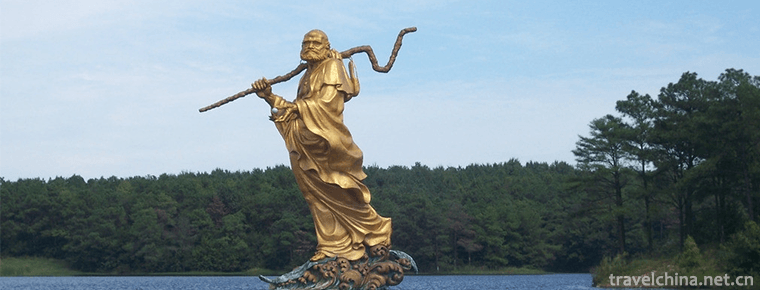
-
Fish Ball
Fish balls, also known as "fish wrapped meat", are mixed up with eel, shark or freshwater fish, mixed with sweet potato starch (* starch), and then wrapped.
Views: 236 Time 2018-11-02 -
Wa Palace Scenic Area Handan City
Wa Palace, located in Zhonghuangshan Mountain, Shexian County, Handan City, Hebei Province, covers an area of 5 square kilometers..
Views: 239 Time 2018-11-24 -
Zhou Enlais Hometown Scenic Spot
Zhou Enlai's hometown scenic spot is located in Huai'an City, Jiangsu Province, a famous historical and cultural city in China. It is a national 5A-level tourist attraction..
Views: 192 Time 2018-12-06 -
Shanshan guild hall
Shanxi-Shaanxi Guild Hall is the place where Shanxi and Shaanxi merchants and businessmen associate with each other and worship gods. It combines exquisite architectural.
Views: 167 Time 2019-02-08 -
Guan Suo Opera
Guansuo Opera is a kind of local opera, which belongs to the ancient Nuo Opera. It is only found in Xiaotun Village, Yangzong Town, Chengjiang County, Yunnan Province. .
Views: 159 Time 2019-05-01 -
Kazakh Tiermai
Tiermai, which means "short poem" in Kazakh language, usually implies philosophy in the poem in a narrative way to give people inspiration. This kind of poem is widely spread among Kazakh he.
Views: 180 Time 2019-05-02 -
Haizi Opera
Hezi Opera is one of the traditional operas in Anhui Province. It was named after the pronunciation of the word "sea". It is popular in some areas of Anhui and Henan.
Views: 193 Time 2019-05-03 -
Huatuo Wuqin Opera
Huatuo Wuqin Opera is a set of guiding techniques compiled by Huatuo, a famous physician in the late Eastern Han Dynasty, according to the principles of traditional Chinese medicine,.
Views: 94 Time 2019-05-04 -
Four strands
Four-strand string, also known as four-strand string, two-strand string, five-tune string and five-tune tune tune tune, is one of the ancient traditional local operas in China. It originates from Julu.
Views: 387 Time 2019-06-16 -
Traditional Brewing Techniques of Distilled Liquor
Distilled liquor brewing is to first make grains, potatoes and other starch-rich or sugar-rich raw materials into grains (no filtered wine) or fermentation into grains (turbid wine), and then distille.
Views: 180 Time 2019-07-25 -
Deyang first industry
In 2018, the sown area of crops in Deyang City was 477000 hectares, 533 hectares less than the previous year, a decrease of 0.1%. Among them, the sown area of grain crops was 311000 ha, decreased by 1525 ha, decreased by 0.5%; the sown area of oil .
Views: 125 Time 2020-12-14 -
Climate of Yibin
Yibin City has a humid monsoon climate in the middle subtropics, and the low hills and river valleys have the climate attributes of south subtropics. It has the characteristics of mild climate, abundant heat, abundant rainfall, suitable illumination, long fr.
Views: 354 Time 2020-12-18
